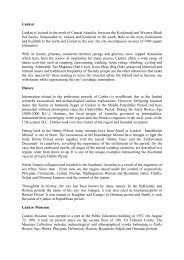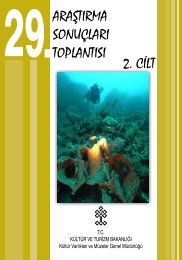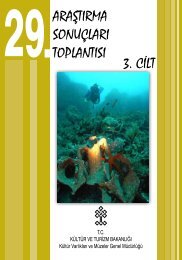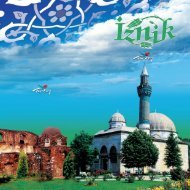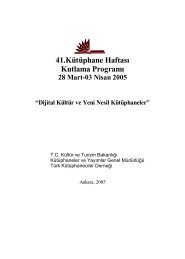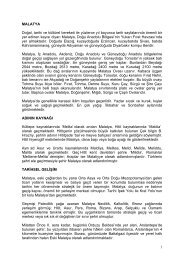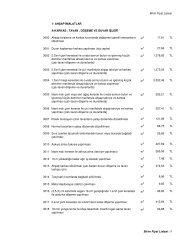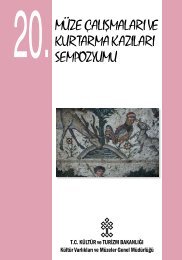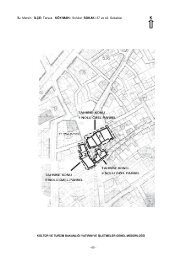PAMUKKALE ingilizce kapak.indd
PAMUKKALE ingilizce kapak.indd
PAMUKKALE ingilizce kapak.indd
Create successful ePaper yourself
Turn your PDF publications into a flip-book with our unique Google optimized e-Paper software.
Hierapolis was best described by Prof. rancesco<br />
D’Andria who supervised the archaeological<br />
excavations<br />
Pamukkale derives its name, which means<br />
“Cotton Castle”, from the white travertine<br />
deposits formed by thermal springs.<br />
However the travellers of 18 th century,<br />
looking at the graves scattered along the<br />
plain on top of the ridge called it “Pambouk<br />
Kalesi” which means the “Castle of Graves”.<br />
The outstanding natural scenery also<br />
cradles the ruins of Hierapolis of Phrygia,<br />
one of the sacred cities of the East. The<br />
excavations and restitution work carried<br />
out in the recent years have unearthed the<br />
traces of one of the famous centres of Asia<br />
Minor. Every year more than one million<br />
visitors explore the splendour as described<br />
by author A. Aristides in his Oration on<br />
Rome in the 2 nd century AD. The expression<br />
used in the Oration is as follows: ‘ ..., the<br />
whole empire is full of gymnasia, fountains,<br />
temples, workshops, and schools … cities<br />
glisten with radiance and charm, ...’<br />
14



![11. Türk Arkeoloji ve Etnografya Dergisi [2011] - kulturvarliklari.gov.tr](https://img.yumpu.com/50970752/1/182x260/11-turk-arkeoloji-ve-etnografya-dergisi-2011-kulturvarliklarigovtr.jpg?quality=85)
